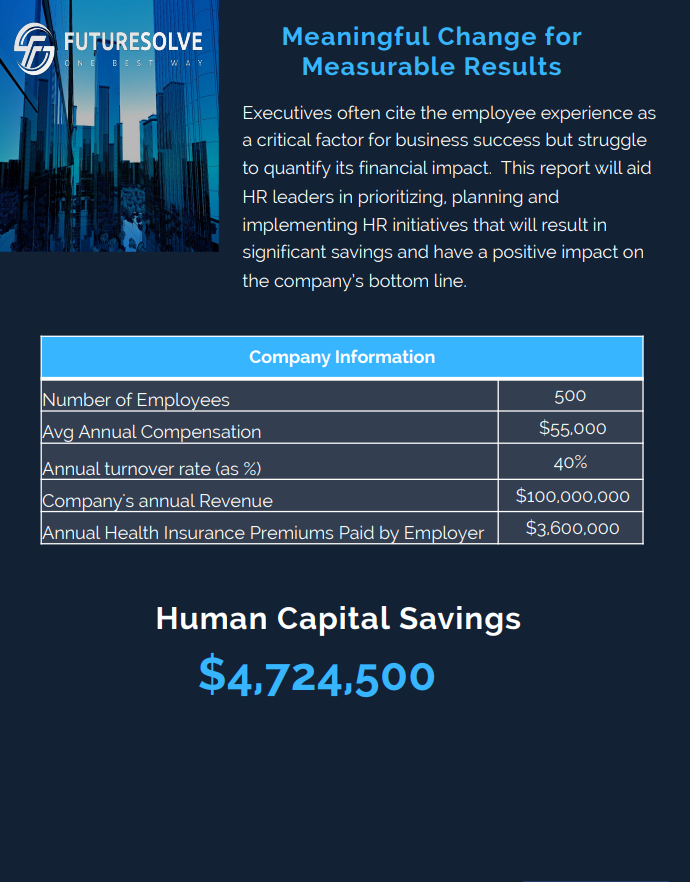There is no better time to search for an all-new position than when you are employed gainfully. Studies have consistently revealed that employers keep looking for highly favorable applicants who might have already had jobs -especially if they come across an opportunity to garner talent out of a competitor.
Therefore, it is no surprise that retention always remains a primary focus on HR business leaders and teams. In addition to the disruption of losing out on a good worker and the overall costs to ensure recruitment, training, and hiring the right replacement, when a long-term employee might leave, customer and institutional knowledge will eventually walk out of the company’s doors.
The positive note is that even the modest investment in keeping and retaining the talent will help in paying off in intangible and tangible ways.
What were the Employee Turnover Rates in 2022?
The Great Attrition, The Great Reshuffle, The Great Resignation, and the Big Quit -since the time of 2021, HR professionals are expected to deal with higher employee turnover rates as well as resignations as individuals have started returning to work since the state of the global pandemic. According to a recent study report, it is estimated that last year, total separations across organizations of the globe were around 3.5 million.
Tracking employee turnover turns out to be a data-driven technique to understand how many individuals are leaving the organization and under what specific circumstances. Higher voluntary turnover rates tend to impact the overall profitability of the company -eventually, customer satisfaction. On the tangible end, it is expensive to recruit new individuals.
6 Common Reasons for Employee Turnover
People continue leaving and joining companies -it is not a new concept. There are several reasons why someone might think of leaving your organization. Some reasons are not at all related as they are significantly unavoidable. However, if your workers end up leaving due to dissatisfaction or unhappiness at work, or you are continuously firing underperforming employees, you might have a problem.
Some of the potential reasons for employee turnover rates for your organization can be:
1. Burnout
Burnout takes place when employees are asked to execute tasks without having the requirement of existing resources succeeding. It especially occurs when they feel a lack of overall control or when they continuously face more stress than what might be manageable. Burnout combines physical and emotional exhaustion with a sense of self-blame and hopelessness while being able to manifest in physical and behavioral issues.
Reducing burnout will involve handling some core factors -including insufficient reward, demand overload, lack of fairness, socially toxic workplaces, lack of control, and value conflicts. HR managers and teams should ask the respective employees for relevant feedback on the workloads.
2. Poor Relationships within the Team
To compete with high-end organizations, small businesses are expected to reflect efficient workforces that tend to be as efficient as possible. One of the ways to achieve the same is by focusing on minimizing turnover and improving retention. Small business owners are expected to take an honest as well as difficult look at the respective actions along with the actions of the managers. There are several ways to improve the turnover rate -especially if it is due to poor relationships within the team.
It is recommended to conduct exit interviews to understand exactly why employees tend to leave the organization. Talk to the HR manager about potential strategies to fix the existing situation. For instance, you are most likely to put the HR manager on probation or even think of firing them.
3. Lack of Flexibility
Flexibility is closely associated with the company culture. Gone are the days of the standard 9 to 5 job in your office. Our lives tend to be busy and we are always looking out for more work-life balance. Most organizations offer access to flexible working options like flexible hours as well as remote working.
If you are not open to the concept of flexible working, your employees might start searching elsewhere. It is also important to find that other organizations are open to flexible working. They might find it to be a highly attractive option. Flexible working should be across the entire organization while being offered to all employees. Otherwise, you might run the risk of further increasing turnover rates.
4. Poor Compensation
Pay turns out to be one of the primary causes of employee turnover. A recent study revealed that around 70 percent of respondents would leave their jobs due to low pay. An average employee can expect an overall increase of around 3 percent while staying with the same organization -in opposition to the 10 percent or 20 percent boost in payments for switching organizations. Shifting organizations offer job seekers the opportunity to negotiate pay & benefits as a part of the interview process.
To fix the issue, conduct regular compensation reviews to make sure that pay & benefits are highly consistent with the respective industry standards while being comparable to competitors. Offer employees regular raises as well as opportunities to review & negotiate compensation.
5. Lack of Recognition
In case a worker is struggling, your open feedback can assist them in managing the overall workload as well as refocus. Ignoring the chance for feedback, or offering unhelpful feedback, will leave your employees to diminish, struggle, and become disheartened and eventually, give up.
6. Boredom
It is believed that bored workers are two times more likely to leave an organization. Therefore, the overall turnover and associated risks and costs also tend to increase. This leads to the creation of a negative image while ruining the reputation of the company amongst existing and potential clients.
Conclusion
There are several ways to reduce employee turnover. When you establish specific guidelines for in-depth evaluations and research benefits & salary within the industry of the organization, you can improve existing relationships between employees and managers. It is also recommended to set realistic and ambitious goals for the entire organization.





























